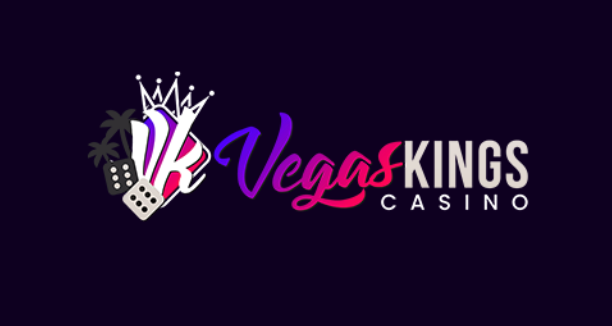Alberta region
Before we get into more details about all the gambling peculiarities in the province, we find it necessary to generally introduce this region to you. The province of Alberta was named after Princess Louise Caroline Alberta (1848–1939), who was the fourth daughter of Queen Victoria.
Alberta (AB) is Canada’s prairie province bordering with the U.S. state of Montana to the south, Saskatchewan to the east, British Columbia to the west, and the Northwest Territories to the north.
AB is considered the fourth most populous province with an estimated population of 4,067,175 in 2016 according to Population and Dwelling Count Highlight Tables. AB is also considered to be the most populous of Canada’s prairie provinces, which are, evidently, AB, Manitoba, and Saskatchewan.
The province’s capital is Edmonton, which is basically the geographic centre of AB and the state’s service hub and primary supply of the Athabasca oil sands, Canada’s crude oil, and other northern resource industries. The largest city of Alberta is Calgary, which is located about About 290 km south of Edmonton.
In case you are interested in the best tourist destinations in Alberta, check out the following: Sylvan Lake, Banff, Drumheller, Canmore, Jasper, and Lake Louise. They are truly incredible!
Alberta’s gambling history and legal regulations
While it’s evident that gambling is absolutely legal in the province, let’s go back to the history and learn it together how the gambling industry started and was gradually developing in Alberta.
In 1967, there was opened the first charitable casino at Edmonton’s annual fair (Klondike Days).
In 1969, there were made significant amendments to the Criminal Code of Canada that resulted in the authorization of lotteries and sweepstakes. Owing to those amendments, all the Canadian provinces, including AB, of course, received the light to licence and operate lotteries and casinos. The same year, the second charitable casino was opened on the annual fair in Calgary known as Calgary Stampede.
In 1975, a service club (Edmonton Kinsmen Club) established in Edmonton the first not-for-profit casino.
In 1978, there were Laycraft public inquiry claiming about entrenching corrupt carnival gaming activities in the province.
In 1980, there was established the first in the province privately operated charitable casino in Calgary known as Cash Casino. The second privately operated charitable casino was opened in Edmonton in 1981.
In 1985, The Canadian Criminal Code was amended authorizing provinces to manage and conduct electronic and mechanical gaming devices.
In 1986, in Edmonton, there was established Casino ABS South, which is nowadays known as Casino Edmonton.
In 1988, Stampede Casino was opened in Calgary.
In 1989, there was launched the horse racing simulcast at Calgary’s Trout Springs. The same year, the first in the province purpose-built casino known as Elbow River Casino was opened in Calgary. Another gambling advancement came next year, in 1990, when there was introduced Teletheatre betting. The same year, there was opened Palace Casino in Edmonton and Sandman Inn Casino in Edmonton, yet the latter was closed after the first seven months of operation.
In 1991, at summer fairs in Edmonton and Calgary, there were tested Video lottery terminals (VLT). The next year, Video lottery terminals were launched in the province. Within quite a short period of only 3 years, there were projected 8,600 machines. In 1991, there was opened a casino in the base of the Calgary Tower, yet it was closed in a few tears.
In 1993, in Lethbridge, there was opened Casino ABS, which still exists nowadays known as Casino Lethbridge. The same year, during the Edmonton Klondike Days and rural fairs, there were tested slot machines in the Calgary Stampede.
In 1994, the Alberta Alcohol and Drug Abuse Commission (AADAC) receives funding for problem gambling treatment as well as problem gambling research and education. The same year, there were opened two casinos — Gold Dust Casino in St. Albert and McMurray casino, which is now known as Boomtown Casino.
In 1995, there was created The Alberta Gaming and Liquor Commission (AGLC) that serves to combine all the responsibilities and operations of Alberta Lotteries and Gaming, Alberta Lotteries, the Alberta Liquor Control Board, the Alberta Gaming Commission, and the Gaming Control Branch. The same year, Cash Casino was opened as a permanent facility in Red Deer.
1996 is the year of introducing Slot machines and Satellite bingo in Alberta’s charitable casinos as well as launching even more land based casinos: Baccarat Casino in Edmonton, Frank Sisson’s Silver Dollar Casino in Calgary, Casino by Vanshaw in Medicine Hat. The same year, there was formed The Alberta Racing Corporation in order to revitalize horse racing in the province. Introduction of slot machines at Edmonton Northlands serves as a part of an initiative aimed at revitalizing the horse racing industry in the province.
In 1997, there were opened two casinos – Casino Calgary and Jackpot Casino in Red Deer. The same year, slot machines were installed in Lethbridge in a racetrack facility.
1998 was quite a significant year for video lottery terminals since their plebiscites were held in 36 Alberta municipalities, six of which voted against video lottery terminals and asked for their removal from their municipalities. Consequently, VLT retailers decided to improve the situation legally. In such a way, the court claimed that video lottery terminals can’t be removed in the stated municipalities unless there is a specific legislation in those municipalities. Since there were no such laws, video lottery terminals remained in the municipalities that voted for their removal.
In 1999, the case with video lottery terminals was reopened. There was quite a significant confrontation between the Bill 36 passed by the Alberta government in order to legally remove the video lottery terminals on one side and the Alberta Court of Queen’s Bench on the other side that prohibits the removal of video lottery terminals pending a constitutional challenge of Bill 36. The same year, there was opened The Great Northern Casino in Grande Prairie and closed Cash Casino (Lethbridge) after 5 years of operation.
In 2000, the gaming licensing policies were reviewed. The same year, in Edmonton there was opened the largest gaming facility (75,000 sq. feet) known as Casino Yellowhead. Another land based gambliong venue that was opened that year was Boomtown Casino (Fort McMurray).
In 2002, on the basis of the Alberta’s unique charitable gaming model, the province’s government introduced a new First Nations Gaming Policy regulated by AGLC. the same year, there was removed moratorium that used to restrict new casinos establishment.
In 2003, The Alberta Gaming and Liquor Commission (AGLC) honored the results of plebiscite of 1997-1998 and removed around 200 video lottery terminals located in the mentioned six municipalities. The same year, DIGI Bingo and Keno were introduced into Albertan bingo halls.
In 2004, as many as 6,000 video lottery terminals were replaced with updated machines.
In 2005, there was opened Deerfoot Inn & Casino in Calgary. The next year, there was opened Century Casino & Hotel in Edmonton as well as River Cree Resort and Casino located on the Enoch Reserve adjacent to the City of Edmonton. River Cree Resort and Casino is basically the first casino operating under the Alberta’sFirst Nations Gaming Policy. The same year, the province’s government made amendments to the gambling policies in such a way that it allowed more flexibility First Nations charities in order to spend charitable gaming proceeds.
In 2007, there were opened three land based casinos: Casino Camrose, Casino Dene (on the Cold Lake First Nation), and Grey Eagle Casino (on the Tsuu T’ina First Nation, which is quite near Calgary).
In 2008, there were opened two land based casinos: Stoney Nakoda Resort and Casino (in Kananaskis, on First Nations land) and Eagle River Casino and Travel Plaza (in Whitecourt, on First Nations land).
In 2009, the bar owners and operators of the Rocky Mountain House wrote a petition to the town council asking to abolish the ban of video lottery terminals. However, the same year, there was held a plebiscite when the city residents vote in favour of maintaining the VLTs ban. In 2009, the operator of Stampede Casino known as Calgary West Hospitality was placed into voluntary receivership. Besides, the same year there was noticed the provinces revenues decline in the gambling sector. The decline had been noticed for a second straight year.
In 2010, another casino (specifically, Silver Dollar Casino located in Calgary) was placed into receivership by the casino’s owner Evergreen Gaming Corp. in order to get creditor protection.
In 2013, all the video lottery terminals across the province were replaced with updated gaming machines.
Gambling facts and peculiarities in the Alberta province
Alberta is probably the best Canadian province for gambling since here you can play in as many as 58 land based casinos with total number of over 16,537 gaming machines and 499 table games. The betting range in the province is quite democratic (from $0.01 to $1,000), which welcomes gambling tourists and local gamblers with a limited budget as well as high rollers.
Another gambling venues in the province include the following: 28 Bingo Halls, 24 Casino facilities (13,483 slot machines), 2,650 Ticket lottery centres, 903 VLT locations with over 5,989 VLTs, 82 Keno Facilities, 3 Racing entertainment centres. Quite an impressive list, huh?
According to Problem Gambling Resources Network Alberta, Albertans spend annually over $23 billion on various legal gambling activities, such as video lottery terminals ($ 7,641,522,000), slot machines ($15,812,590,000), Electronic Bingo ($34,691,000).
Problem Gambling Resources Network Alberta provides the following info about the Gambling Profits in Alberta: VLTs — $ 611,890,000, Slot Machines — $1,220,812,000, Ticket Lottery — $298,125,000, Electronic Bingo — $ 11,325,000, which results in the total sum of $2,142,152,000.












































